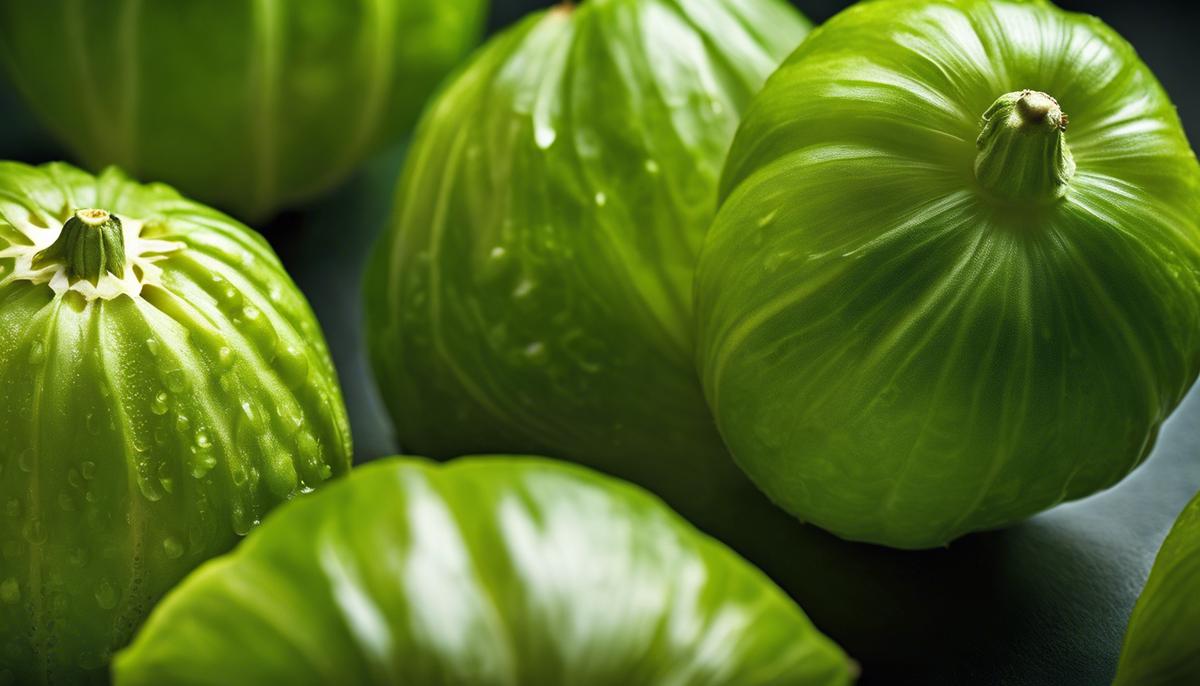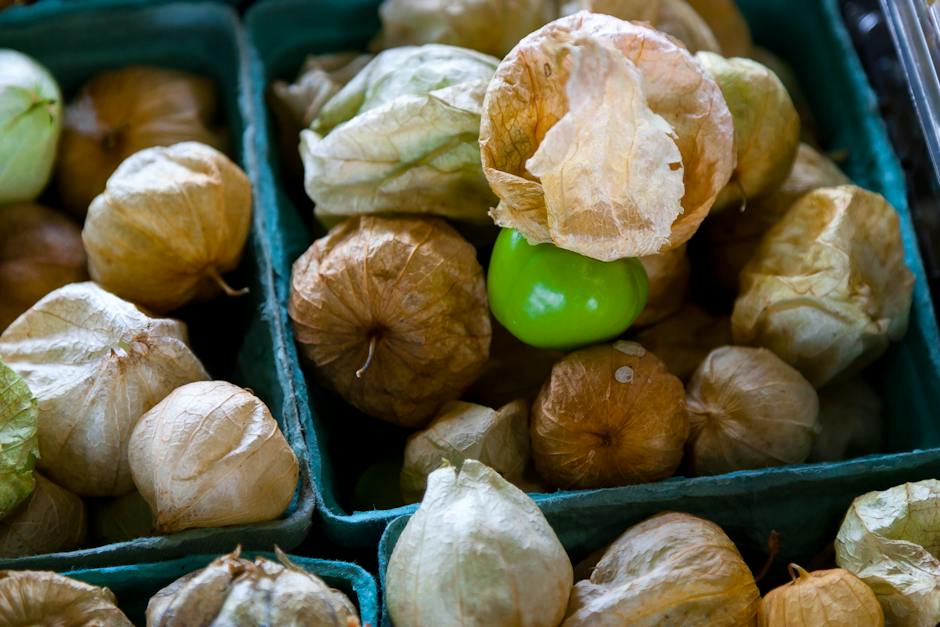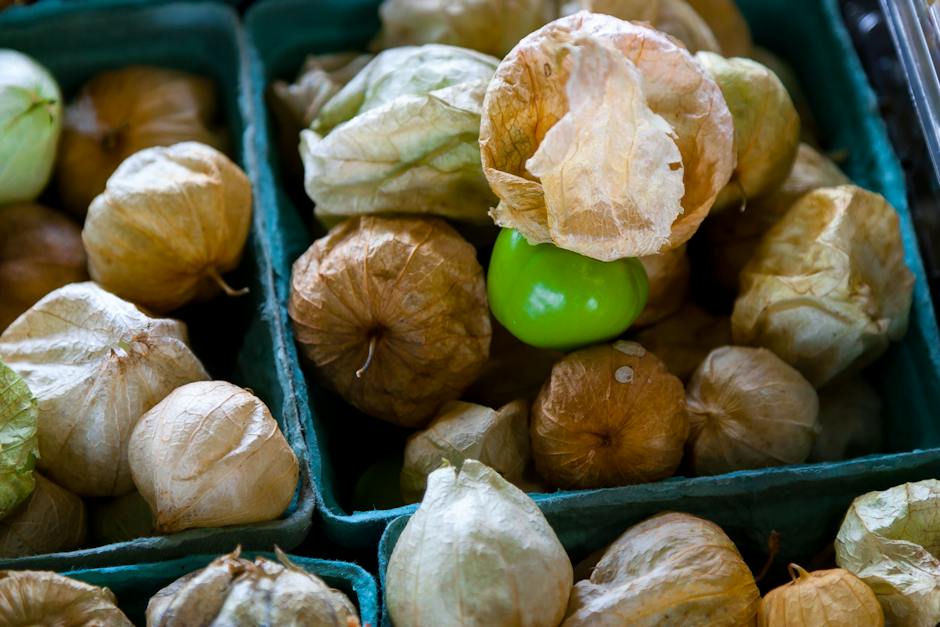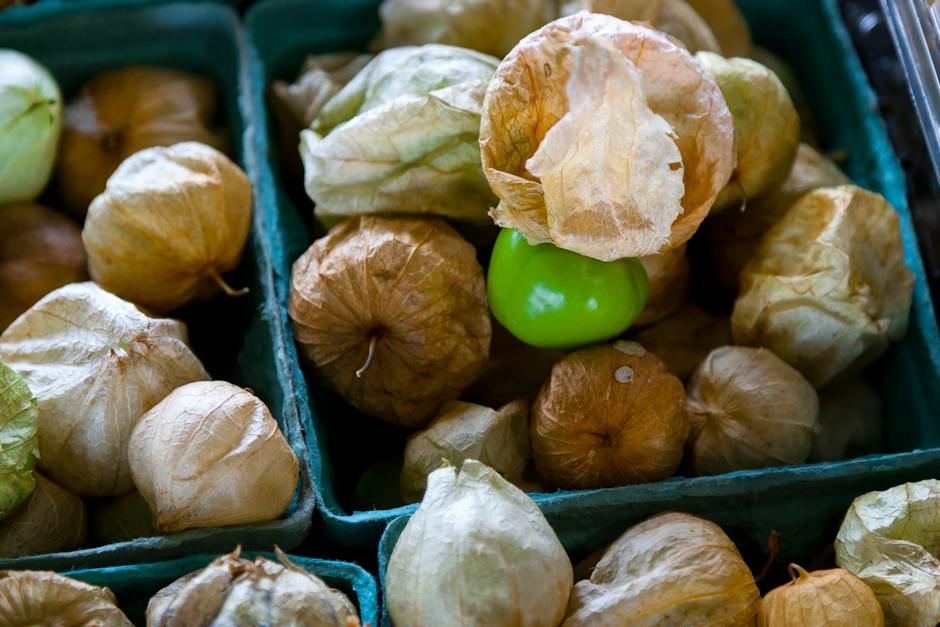Decoding the Ripeness of Tomatillos

Deeply ingrained in a colorful spectrum of Mexican cuisines, the humble tomatillo is an unsung hero of the culinary world. It’s an essential ingredient in many traditional dishes, from salsa verde to chiles and other exquisite delights. However, to truly savor its unique zest and reap the immense benefits, it’s essential to understand the nuances of choosing a ripe tomatillo. This guide will walk you through how to identify, feel, and taste the ripeness of tomatillos. We’ll delve into the vibrant green hue, the firm but not hard texture, and the slightly sweet, citrusy tang of a perfectly ripe tomatillo.
Recognizing ripe tomatillos
Unveiling the Vibrancy of Ripeness: A Quick Guide to Visually Identifying a Ripe Tomatillo
Ah, the thrill of the kitchen! The joyous dance of flavors, the symphony of scents, and every meal, a canvas for culinary art. When it comes to gastronomy, nothing quite beats the vibrant tang of a ripe tomatillo. Its acidity is the backbone of numerous dishes, adding a spritz of excitement, from a velvet-smooth salsa verde to a lusciously gratifying pozole. Certainly, the importance of using ripe tomatillos cannot be belittled. The technique of identifying a ripe tomatillo visually can be a delightful addition to a culinary arsenal. So, let’s dive in!
The first striking thing about a ripe tomatillo is its color. When hunting for the perfect tomatillo amongst the garden’s burgeoning crop or amidst the colorful riot in a farmer’s market, keenly look for a yellowish-green hue. It’s a happy medium tucked between the startling green of an underripe tomatillo and the pale yellow of an overripe one. Picture a beaming sun lazily setting over an emerald valley, that’s the shade you want. The color, a testament to its sun-kissed days, hints that it is packed full of the delightful acidity that so many recipes require.
A ripe tomatillo also feels slightly soft to the touch, yet firm enough to hold its shape with integrity. There’s a fine balance! It finds itself comfortably lodged between the hard unyielding stiffness of an underripe tomatillo and the squishy, almost tender feel of an overripe one. When held, it should give a subtly gentle resistance, like a loving squeeze in greeting from an old friend. Further, it should feel weighty for its size, as if bursting with juicy expectation.
The natural protective husk that envelope a tomatillo is more than just an item of produce couture. It’s a crystal ball, revealing the ripeness story. For a ripe tomatillo, the husk appears dry and somewhat leafy, and loosely swaddles the fruit. It should part easily, allowing a clear inspection of the jewel inside. If it’s tightly clinging on, the odds are that you’ve stumbled upon an underripe tomatillo.
Lasty, observation of the skin underneath the husk is crucial too. This should be smooth, glossy, and unblemished, mirroring the perfection of its ripeness.
Undeniably, identifying a ripe tomatillo visually is a skill, a gentle art, which can elevate the essence of numerous mouth-watering delicacies. Next time you come across this humble fruit, may your eyes be the perfect ripeness gauge, leading straight to gastronomic pleasure. Enjoy the ride, fellow food-lovers, the world of tomatillos stands bright and inviting.

Feeling the ripeness
Lovers of food and flavor know that selecting the perfect ingredients can make a world of difference in the kitchen. One underestimated fruit is the tomatillo — a key ingredient in a multitude of authentic Mexican dishes. Think homemade salsa verde or a pot of simmering green chili. But how exactly do you know when a tomatillo is ripe? Thus, having identified color and texture, let’s get deeper into determining a ripe tomatillo’s feel in our hands.
There’s a certain corporeal connection to our food when we use our sense of touch — an intimacy that informs us of its readiness to transform our recipes into culinary masterpieces. It’s just like choosing the perfect tomato, but with a little bit of flair. So don’t just take a glance, involve your hands.
Although we’ve covered how the husk and the skin look, what about the feeling inside? A ripe tomatillo should feel dense and juicy, with a slight give, not unlike a plum. Too firm and it might still be green, which can lend a bitter taste to your dishes. Too soft, and it’s overripe, possibly losing its tangy zip. You’re seeking that perfect, subtle squish — a delicate balance indeed.
Now, let’s not forget about weight. Have you ever heard the phrase “heavy for its size”? It’s a truism when picking ripe fruits and it definitely applies to tomatillos as well. A ripe tomatillo should feel substantial, it should have a pleasing heft in the palm of your hand. This indicates it’s packed full of juice and ready to burst with flavor. A lightweight tomatillo could mean it’s overly dry and past its prime.
Using multiple senses in harmony truly enriches our experiences — especially when it comes to food. Feeling the ripe tomatillo, noting its gentle firmness, and its satisfying weight, connects us more deeply to our culinary creations. So, the next time you find yourself in the produce section, seek out the tomatillos and take a moment to really feel them, to sense their readiness to be part of your next delicious meal.
Just remember these simple cues — firm yet yielding, and heavy for its size. These sensory tips could be the key to unlocking the flavors of countless mouthwatering dishes, all starring the humble yet mighty tomatillo. Give it a try, and make the tomatillo the hero of your next culinary adventure.

Tasting ripe tomatillos
Now that the art of picking out the perfect tomatillo has been covered in detail, it’s time to dive into the true heart of the story – what a ripe tomatillo actually tastes like. Of course, the taste experience can fluctuate slightly depending on the variety, but here we’ll focus on the typical green tomatillo, a staple in many beloved recipes.
Imagine biting into a similar yet distinctly different relative of your everyday tomato. A ripe tomatillo imparts a unique combination of flavors that can only be described as a fusion of tartness and sweetness with a citrusy undertone.
The distinctive tartness of a tomatillo is what sets it apart in the world of fruits. It’s audacious and forward, acting as a splendidly tangy counterpoint in a host of recipes, especially in salsas and sauces which require an element of sharpness to cut through the richness.
Next, there’s an underlying sweetness that’s subtle but unmistakable. Subtler than what you’ll find in a ripe tomato, but enough to offer a degree of balance to the tartness. The sweetness combined with that citrusy kick gives the tomatillo that vibrant flavor profile, which becomes more pronounced as it reaches its ripened peak.
And let’s not forget the hint of herbaceous flavor, like a whisper of fresh green bell pepper or a touch of kiwi, rounding out the whole tasting experience. But unlike these, the fruit holds a slight mineral undertone – courtesy of the husk it grew in – exuding a certain earthiness.
The flavor might be complex, but the texture is straightforward. A ripe tomatillo is dense yet juicy with a certain level of crunch to it. It’s a satisfying bite, one that introduces an element of textural contrast, making it an intriguing addition to any dish.
In terms of heat, it’s safe to say that tomatillos lean towards the milder end of the spice spectrum, adding a pleasant warm note rather than a fiery one. Despite their association with Mexican cuisine, known for its bold, spicy flavors, tomatillos bring more tang than heat to the culinary table.
In conclusion, a ripe tomatillo is a beguiling blend of tart, sweet, and citrusy, with a hint of earthiness. And it’s this distinctive flavor profile that makes them such a favorite in the culinary scene, adding both complexity and balance to dishes.
So go out and experiment with this versatile fruit, perhaps starting with a simple salsa verde, to truly understand its unique taste. Use every sense to savor it – feel, gaze, sniff, and most importantly, taste. It’s the joy of discovering new flavors and the surprises they bring to the palate, that makes the culinary journey so much more exciting. Happy exploring!

Armed now with the knowledge to select ripe tomatillos, you too can create delicious dishes that exhibit a balance of sweetness and acidity typically found in traditional Mexican cuisine. But beyond that, you will be able to appreciate this humble and often overlooked ingredient for the unique and diverse flavors it brings to the table. So the next time you find yourself at the grocery store or market, remember these identifying features of ripe tomatillos – a healthy green color, a firm but not hard texture, and a slightly sweet, tangy flavor. Embrace the taste of nature’s bounty and start your culinary journey with the ripe and tangy tomatillo today.



